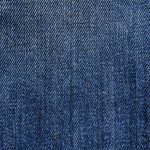When choosing between polyamide and nylon, know that nylon is a specific type of polyamide with stronger abrasion resistance and higher hardness, ideal for tough, wear-prone uses. Polyamide covers a broader range of materials, often offering more flexibility and better moisture resistance. Nylon generally costs less and has more established recycling options, while polyamide variants can be pricier and tailored for softness. To pick the best fit for your project, consider their unique properties and how they match your needs.
Table of Contents
Key Takeaways
- Nylon is a type of polyamide made from specific diamines and dicarboxylic acids through condensation polymerization.
- Nylon generally offers higher abrasion resistance and hardness compared to other polyamide variants.
- Polyamides can be engineered for better flexibility and lower moisture absorption than nylon.
- Nylon production consumes more energy and releases more nitrous oxide, but has more established recycling programs.
- Choose nylon for toughness and wear resistance, and polyamide for flexibility and softness in textile applications.
Chemical Composition and Structure
When you compare polyamide and nylon, it’s important to understand their chemical makeup and structure first.
Polyamides are polymers with repeating units linked by amide bonds, formed between carboxyl and amino groups. Nylon is actually a type of polyamide, made through condensation polymerization of diamines and dicarboxylic acids.
Different nylon variants, like Nylon 6 and Nylon 6,6, vary in their monomer composition and chain length, affecting properties such as melting point and strength. While all nylons fall under the polyamide category, not all polyamides are nylons—some use different monomers or structures.
Nylon types differ in monomers and chains, influencing melting points and strength; all nylons are polyamides, but not all polyamides are nylons.
You’ll find that the arrangement and type of amide linkages, along with molecular weight and crystallinity, directly influence the material’s durability, flexibility, and resistance.
Understanding these differences helps you select the right material for your needs.
Manufacturing Processes
When you compare polyamide and nylon, understanding their raw materials is key to seeing how they’re made.
You’ll also want to look at the different polymerization techniques each uses to form their fibers.
Finally, consider how production efficiency impacts cost and quality in their manufacturing processes.
Raw Materials Comparison
Understanding the raw materials behind polyamide and nylon is key to grasping their manufacturing differences.
When you look at nylon, it generally comes from petrochemical sources like hexamethylenediamine and adipic acid. These building blocks are essential for creating nylon 6,6, a common variant.
Polyamide, on the other hand, covers a broader range of materials. You’ll find it includes both synthetic variants like nylon and bio-based alternatives derived from natural sources such as castor oil or other renewable feedstocks.
This diversity in raw materials means polyamides can be tailored for different applications. Knowing where these inputs come from helps you understand not just the production process but also environmental impacts and performance attributes tied to each material’s origin.
Polymerization Techniques
The variety in raw materials directly influences how polyamides and nylons are polymerized.
You’ll find that nylon typically forms through condensation polymerization, where diamines react with dicarboxylic acids, releasing water as a byproduct. This step-growth process builds long chains essential for nylon’s strength and flexibility.
Polyamides, however, can be synthesized via ring-opening polymerization when cyclic monomers are involved, allowing you to tailor molecular weight and structure more precisely.
Both methods require careful temperature control to guarantee proper chain formation and avoid defects.
Production Efficiency Factors
Although both polyamides and nylons share similar chemical foundations, their production efficiency hinges on several critical factors within manufacturing processes.
When you’re producing these materials, you need to focus on:
- Raw Material Quality: Using consistent, high-grade inputs reduces defects and waste.
- Polymerization Control: Precise temperature and reaction time management optimize yield and molecular weight.
- Energy Consumption: Efficient machinery and process design lower costs and environmental impact.
- Cycle Time Optimization: Streamlining each step minimizes downtime and boosts throughput.
Physical and Mechanical Properties
When you compare polyamide and nylon, you’ll notice their physical and mechanical properties play an essential role in determining their applications.
Both materials offer high tensile strength, but nylon typically provides greater durability and abrasion resistance.
Polyamide, a broader category that includes nylon, often exhibits better flexibility and impact resistance depending on its specific formulation.
You’ll find that nylon tends to absorb more moisture, which can slightly affect its dimensional stability and mechanical performance over time.
Polyamide variants can be engineered to reduce this moisture absorption.
With regard to hardness, nylon usually scores higher, making it suitable for wear-resistant parts.
Understanding these differences helps you select the right material based on strength, flexibility, moisture sensitivity, and hardness requirements without confusing nylon for all polyamides.
Common Applications and Uses
You’ll find polyamide and nylon in everything from clothing and sportswear to industrial parts and engineering components.
They’re also popular in consumer goods like backpacks, luggage, and accessories.
Let’s explore how their unique qualities make them suited for these diverse uses.
Textile and Apparel Uses
Since both polyamide and nylon offer durability and flexibility, they’re popular choices in textile and apparel industries.
You’ll find these materials in various clothing and accessories because they handle wear and tear well while maintaining comfort.
Here are four common textile and apparel uses you might encounter:
- Activewear: Both fabrics wick moisture and stretch, perfect for sportswear and gym clothes.
- Outerwear: Their water resistance and windproof qualities make them ideal for jackets and coats.
- Hosiery and lingerie: Their smooth texture and elasticity provide a great fit.
- Accessories: You’ll see them in backpacks, gloves, and even hats due to their lightweight strength.
Industrial and Engineering Applications
Durability and resistance to chemicals make polyamide and nylon go-to materials in industrial and engineering fields. When you need components that withstand wear and tear, these polymers excel.
You’ll find them in gears, bearings, and bushings where low friction and high strength matter. Nylon’s toughness suits it for automotive parts like fuel lines and engine covers, while polyamide’s stability under stress makes it ideal for electrical insulation and cable ties.
If you’re working on conveyor belts or industrial hoses, both materials offer excellent abrasion resistance. Using polyamide or nylon can improve the longevity and reliability of your equipment.
Their lightweight nature also helps reduce energy consumption in moving parts, making your designs more efficient without sacrificing durability.
Consumer Goods and Accessories
Although polyamide and nylon share many industrial uses, they also shine in everyday consumer goods and accessories. When you pick up items like bags, clothing, or sports gear, you’re often handling these versatile materials. They’re lightweight yet durable, making your daily essentials last longer and perform better.
Here are some common uses you’ll find:
- Apparel – Nylon and polyamide’s stretch and breathability make them perfect for activewear and hosiery.
- Luggage and Backpacks – Their resistance to abrasion keeps your gear protected on the go.
- Footwear – Many shoes feature these fibers for flexibility and durability.
- Accessories – From watch straps to gloves, they offer comfort and strength.
Next time you shop, you’ll appreciate how polyamide and nylon enhance your everyday items.
Durability and Resistance Factors
When you choose between polyamide and nylon, understanding how each material stands up to wear and environmental factors is essential.
Both materials offer impressive durability, but nylon generally has higher abrasion resistance, making it ideal for heavy-duty use. Polyamide, a category that includes nylon, often varies in strength depending on its specific type and treatment.
Nylon offers superior abrasion resistance for heavy-duty applications, while polyamide strength varies by type and treatment.
Nylon resists impact and stretching well, so it maintains shape under stress. However, both are susceptible to UV degradation over time, though nylon tends to degrade faster when exposed to sunlight.
Water absorption can weaken both, but nylon absorbs more moisture, which might affect its mechanical properties.
When durability and resistance matter, consider the specific application and exposure conditions to pick the material that best fits your needs.
Environmental Impact and Sustainability
Since you’re considering polyamide and nylon, it’s important to also weigh their environmental impact and sustainability. Both are synthetic fibers derived from petrochemicals, which means their production relies on non-renewable resources.
However, you can evaluate their footprint by looking at:
- Energy Use – Nylon typically consumes more energy during manufacturing than some polyamides.
- Greenhouse Gas Emissions – Nylon production releases significant nitrous oxide, a potent greenhouse gas.
- Recycling Potential – Both materials can be recycled, but nylon has more established recycling programs.
- Biodegradability – Neither nylon nor most polyamides biodegrade quickly, so waste management is essential.
Cost Comparison and Market Availability
If you want to choose between polyamide and nylon, understanding their cost and market availability is vital.
Nylon, being a specific type of polyamide, is widely produced and commonly available, often making it more affordable due to economies of scale. You’ll find nylon products easily across various industries, from textiles to automotive parts.
Polyamide, as a broader category, includes specialized variants that can be pricier and less accessible depending on your location and supplier.
Polyamide encompasses specialized types that may be more expensive and harder to source depending on your area and supplier.
When budgeting, consider that nylon’s mass production typically lowers costs, while advanced polyamide types may require higher investment but offer enhanced properties.
Market availability also depends on regional demand and manufacturing capabilities, so you should check with local suppliers to guarantee timely access to the material you need.
Choosing the Right Material for Your Project
How do you decide whether polyamide or nylon best fits your project? Start by evaluating what your project demands most. Here’s a quick guide:
- Strength and Durability: Choose nylon if you need strong, wear-resistant material.
- Flexibility and Softness: Polyamide works better where flexibility matters, like textiles.
- Cost Efficiency: Polyamide often costs less, so it suits budget-conscious projects.
- Environmental Exposure: Nylon resists UV and chemicals better, ideal for outdoor use.
Frequently Asked Questions
Can Polyamide or Nylon Cause Allergic Skin Reactions?
You might experience allergic skin reactions if you’re sensitive to synthetic fibers, but most people don’t. Both polyamide and nylon are generally safe, though some additives or dyes can cause irritation. Always test new fabrics first.
How Do Polyamide and Nylon Compare in Terms of Color Retention?
You’ll find that both materials hold color well, but nylon tends to retain vibrant hues longer under sunlight and washing. Polyamide is durable too, yet it might fade slightly faster compared to nylon over time.
Are Polyamide and Nylon Recyclable in Home Recycling Systems?
You typically can’t recycle polyamide or nylon in home recycling systems since they’re synthetic fibers needing specialized processing. Instead, look for textile recycling programs or donation options to handle these materials responsibly.
Which Fabric Feels Softer: Polyamide or Nylon?
You’ll find polyamide feels softer and silkier against your skin because it’s designed for smoothness. Nylon tends to be a bit firmer, so if softness matters, polyamide usually wins in comfort and feel.
Do Polyamide and Nylon Fabrics Shrink After Washing?
Think of fabrics like loyal friends—they sometimes change after a wash. You’ll find polyamide and nylon gently resist shrinking, but harsh heat can make them tighten up. So, treat them kindly to keep their shape.
- Troubleshooting Common Issues With Nonwoven Fabrics - July 11, 2025
- How Nonwoven Wallpaper Differs From Traditional Paper - July 11, 2025
- Are Reusable Nonwoven Bags Eco-Friendly? - July 11, 2025







